Tree Planting Projects In Mongolia

Khar Nuur Lake Mongolia
June 6, 2023
Mongolia Must-Reads: Rough Magic by Lara Prior-Palmer
July 29, 2023Tree Planting Projects In Mongolia
You might be surprised at the diversity of tree-planting projects in Mongolia especially considering the fact that trees in Mongolia have such a long growing period as the country, on average, only experiences only 90-120 frost-free days a year. Also, although Mongolia covers around 156,411,600 hectares (1,564,116 square kilometres – the size of Western Europe), only approximately 10.8 million hectares have forest cover.
Mongolia’s forests are important for sequestering carbon, maintaining soil stability, and providing habitats for Mongolia’s endemic flora and fauna species that are not only of global conservation importance but also underpin the livelihoods and cultural identities of Mongolia’s herding communities. However, they are being impacted by illegal or uncontrolled logging, forest fires, and the absence of restoration management and of long-term management planning. This is what led us to work with a number of tree-planting projects in Mongolia that between them are helping to create a climate-resilient Mongolia where wildlife and people can thrive. Although trees in Mongolia have a long growing period trees help to bind the loose soil and thus are effective against erosion, help reduce wind, dust and desertification, attract rainfall and help build suitable conditions for biodiversity.
Gobi Oasis
Gobi Oasis is based in Dundgobi Aimag’s provincial town, Mandalgobi. Located in what is known as the middle Gobi in an area of the desert steppe, Gobi Oasis was formed by Byamba Tseyen in 1975 after graduating from the University of Agriculture in Ulaanbaatar as a Forest Engineer. During her many years of hard work, she has been honoured with national awards including ‘The State Honoured Worker of Environment’, ‘The National Ranger of Mongolia’, and ‘The Golden Star’. Byamba has been on several trips to China, Russia and England to visit other tree-planting projects. She also does classroom training for students and experts, and hosts local and foreign volunteers at the nursery from April through to autumn.
Currently, each visiting EL group typically plants a tree at the nursery and EL and our guests have now planted around 3% of the total number of trees planted at Gobi Oasis. All are trees native to the desert. As well as planting a tree, we make a substantial donation per person for each visit and this payment goes towards the work of Gobi Oasis.

I love this photo of Byamba. Every person that visits and plants a tree is listed in ‘the book’. She can remember their names, the organisation they travelled with and, just the best, she remembers where they planted their tree. Image: EL guest Sue Fox
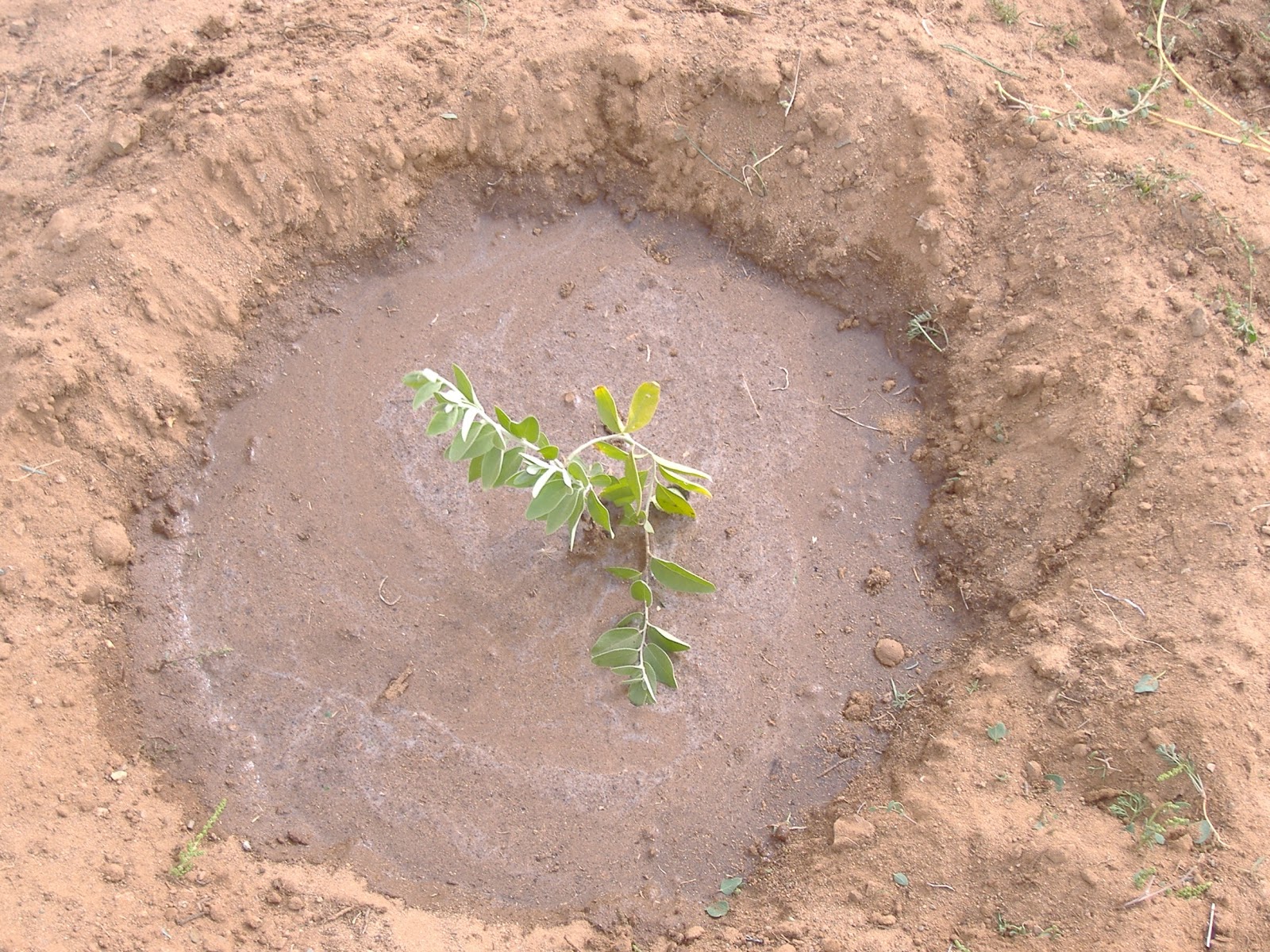

These were the saplings that Turuu and I planted in 2011 when we first started working with Gobi Oasis. The top image is the saplings newly planted in 2011. The second image is the saplings again in 2016.
Elm is the species that a majority of our EL guests plant at Gobi Oasis. Elm trees are scientifically known as Ulmus Pumila. Ulmus is the ancient Latin name for elm and Pumila is Latin for dwarf in reference to the small leaves. The type of elm trees that are found in Mongolia are Siberian elms in shrub sizes and actually originate from Mongolia, Turkestan, Eastern Siberia and Korea. They usually grow between 10 and 20 metres high with a trunk of about 80 centimetres in diameter. In colder areas like Mongolia, the Siberian elm features deciduous leaves.
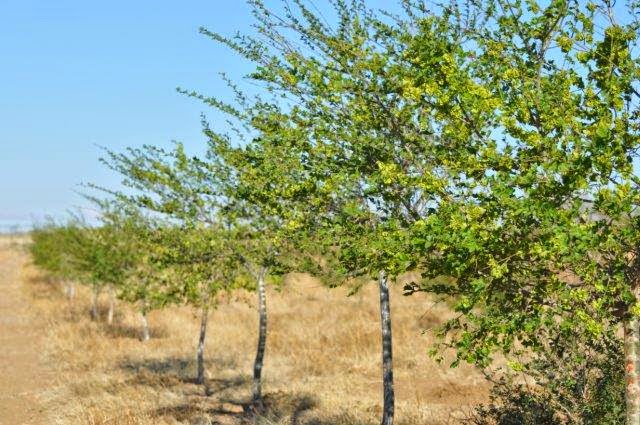
The Siberian Elm are resistant to drought, severe cold, and disease such as Dutch Elm Disease which affects many of its counterparts. They form a great habitat for bio-diversity and are used as windbreakers in the dusty windy steppe terrain. There are about 1500 elm trees growing at Gobi Oasis and they sell young branches for re-plantation.
There are also a small number of aspen and almond trees. Each EL group that visits Gobi Oasis plants their own seeds or saplings, therefore, helping to consolidate the desert soil on the lee side of Mandalgobi. Some saplings are planted in memory. Some of them have been planted by our own team members who are from the Gobi themselves so plant with the focus to help their home environment. And just like a proud mother would say, ‘all are doing fine.’
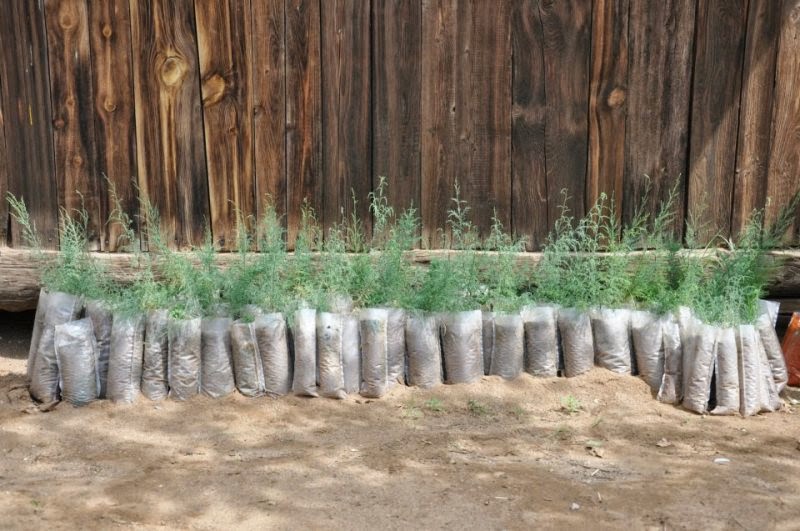
‘From small acorns.’ Seedlings ready to be planted at Gobi Oasis
World Garden Mongolia
World Garden Mongolia is a non-profit organisation established in 2011 and committed to the preservation and increase of Mongolia’s forests for the benefits they bring to Mongolia’s nature, environment, and protection. The organisation was initiated by Mongolian Dulamjav Erdenexhuluun who wants to point out the environmental problems in Mongolia and counteract them. In this way, he wants to motivate his fellow Mongolians to take action for the environment of their country.

Their current main project is reforestation on the Bayanzurkh Mountain on the eastern edge of Ulaanbaatar with 13,000 trees having been carefully planted and maintained (the neglect of seedlings and unskilled planting are both common in Mongolia). The holy mountain of Bayanzurkh was almost completely forested with the naturally occurring tree species (larch) until 1989. In the course of the growth of the city of Ulaanbaatar and the increased use of resources it has been cleared with heavy cattle drives and forest fires preventing natural reforestation. (The boreal coniferous forests of Siberia extend over the northern parts of the country. The larch is the tree species that characterizes the landscape along with pine, birch and poplar.)
Saxaul
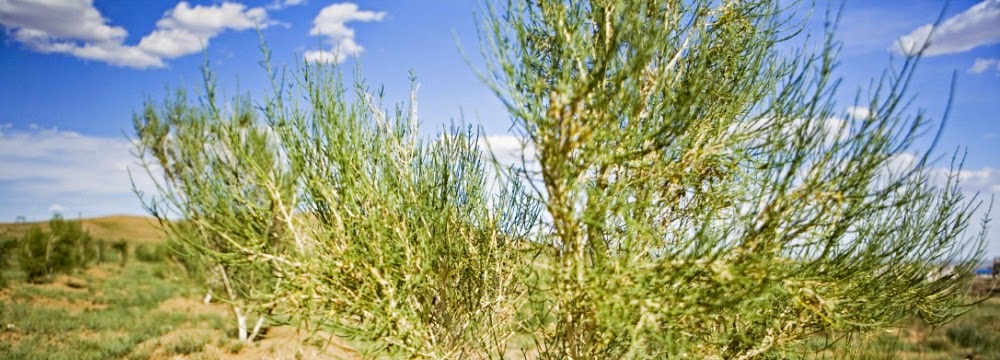
Pastures, Conservation and Climate Action Project
The Pastures, Conservation and Climate Action Project is managed by the Mongolian Society for Rangeland Management. It covers 70,000 hectares and operates in three locations in Mongolia – two central heartland provinces (Tuv & Arkangai) as well as a Gobi province (Bayankhongor) – and focuses on the restoration of the grassland ecosystems with a direct benefit to 4 key grassland habitats: riparian meadow, mountain meadow, mountain steppe and steppe within the three regions.

As part of our Climate Action Plan, we are working towards the goal of measuring the carbon footprints of both our tours and office. Whilst we are working on this we will make a donation per guest to the Pastures, Conservation, and Climate Action Project (known also as the Mongolian Nomad Project). We understand that these carbon offsetting schemes are not the full answer but they are one way that we can limit our environmental impact. We will not formally carbon offset in order to claim carbon neutrality or carbon positivity.
We wanted a high-standard offsetting project local to Mongolia where the local community had a positive say in the scheme and its impact. It’s the first project of its kind in Mongolia – restoring traditional nomadic practices to enable ecosystem recovery and carbon uptake. We will also be offsetting into the same project – balancing our CO2 emissions by investing in Plan Vivo Certificates– environmental service certificates, each representing the reduction or avoidance of one metric tonne of carbon dioxide.
The Mongolian Nomad Project is an independently verified project of Plan Vivo Standard – based on ethical principles intended to deliver long-term climate, livelihoods and biodiversity benefits. The project takes carbon out of the earth’s atmosphere using the natural powers of local communities and focuses on creating performance-based payments to herder families based on changes they are able to make which impact positively on carbon levels. Much of this is about restoring the traditional nomadic way of life to reduce overgrazing pressure and degradation on fragile ecosystems.
174 herding families are involved and benefit. The herding families are being financially compensated for protecting their local environment simply by adhering to traditional nomadic principles. One example is that by pooling resources and skills, and with access to micro-loans the herders are able to sell finished products rather than raw materials, and fetch higher prices. This is working well for processing and creating from animal skins. The herders also undertake biodiversity surveys across their pasturelands. They are also patrolling forested areas to prevent the cutting of trees and working together to stop illegal hunting as well as planting indigenous trees to reduce demands on existing woodland.
Tujin Nars Pine Forest
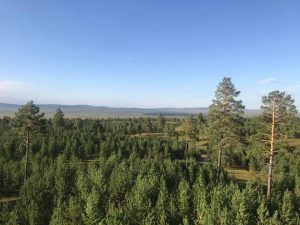
Tujiin Nars Pine Forest Mongolia
The Tujiin Nars pine forest is located in Selenge Aimag near the border with Russia and is a specially protected area of pine trees that covers 8,961 hectares. The forest sheltered Mongolian revolutionaries in the 1920s, was nearly laid bare by illegal loggers in the 1990s, gained its protected status in 2003, and is now the site of one of the most successful reforestation efforts in Mongolia.
‘The story and example of Tujiin Nars is itself an important contribution to the context of Mongolian environmentalism. In a country which is sometimes criticized for its ineffective policy, corrupt politicians and civil servants, and economic inequality, Tujiin Nars reveals the capacity for change and success. Tujiin Nars required improved, effective policy, proactive and committed government and community members, invested stakeholders with tangible resources, and a growing economy. The most important lesson which Tujiin Nars teaches other environmental movements is the importance of holistic development, that creating a political, social, and economically positive environment and community is the integral element in creating real change.’ Julia Bowman, Tujiin Nars: A Story of the Forest
However, one of the most important methods to reduce desertification is planting trees as trees help to sequester carbon, maintain soil stability (helping to reduce wind, dust, and desertification), attract rainfall, and help to build suitable conditions for biodiversity. Planting trees has been picked up by Mongolia’s new president and Mongolia’s ‘Billion Trees’ campaign was officially launched on October 4 by President Khurelsukh who earlier told United Nations General Assembly that Mongolia aims to combat climate change and desertification through the campaign by planting a billion trees by 2030.
‘Planting trees is not something to be politicized. It is now time to end any acts of politicization and enhance national unity in order to combat desertification and reduce land degradation.’ President Khurelsukh
However, planting trees is not only about planting seedlings as the most important thing is to care for the planted trees and this is where Mongolia has failed previously. Also, Mongolia’s current 7.9% of forest cover is being impacted by illegal or uncontrolled logging, forest fires, and the absence of restoration management and of long-term management planning. In addition, as mentioned, trees in Mongolia have a long growing period as Mongolia, on average, experiences only 90-120 frost-free days a year.
But, major companies in Mongolia have committed to joining the national campaign to fulfill their social responsibilities including Mongolian state-owned mining enterprises Erdenet and Erdenes Tavan Tolgoi who are expected to plant 100 million trees and 180 million trees respectively. Mongolia is expected to spend at least 1 percent of its GDP (gross domestic product) annually to reach its target in time.
There is some concern within Mongolia itself that the corruption levels will mean that ‘the cousin’s wife’s brother is probably securing the tender to supply the government with the seeds. ‘ As one recent social media comment highlighted:
‘… yeah, planting trees is definitely a priority when half our population is below the poverty line, there’s smog in every building, there’s non-stop traffic jams (in Ulaanbaatar) and endless other priorities that need to be addressed. Planting trees is probably the least important thing you can do in Mongolia. If you’re argument is about saving the planet, go tell that to Russia and China first.’
If you are interested in joining us in Mongolia, have a look at the range of Mongolia experiences that we offer. Although not all include visits to the Mongolia tree planting project, we can arrange this separately. Just get in touch!
Jess @ Eternal Landscapes


